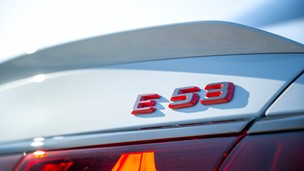The Roomster is an odd mixture of a small hatchback and a compact MPV. It changes character completely at roughly its centreline, where there's a division between what Skoda calls the Driving Room in the front and the Living Room in the rear. Due to the height of its back half, the Roomster has exceptional luggage space for a car roughly the same length as a Fabia.
The range includes the high-economy Greenline II and the Scout, which appears to have more off-road capability. Unlike Scouts in Skoda's other model ranges, however, it doesn't have four-wheel drive and rides no higher than any other Roomster.
Most Roomsters have 1.2-litre petrol or diesel engines, though there is also a 1.6-litre diesel. Five-speed manual transmission is the norm, a seven-speed DSG semi-automatic being available only with the most powerful of the petrol engines.
Production of the Skoda Roomster stopped in 2015 but you can still buy a new one from the remaining stock at UK dealerships.
Performance
Most of the engines produce less than 100bhp, the highest figure of 104bhp being achieved only by the more powerful version of the 1.2 TSI turbo petrol and the 1.6 diesel. Since the high rear roof section gives the car an aerodynamic disadvantage, it's clear that there can be no such thing as a fast Roomster.
With manual transmission, the 104bhp 1.2 TSI version can accelerate from 0-62mph in 10.9 seconds, one tenth sooner than a Roomster with the same engine but the DSG gearbox. The 1.6 diesel takes 11.5 seconds, and all the others take more than 12, the extreme case being 15.9 for the 68bhp non-turbo 1.2.
This won't be a concern if most of your motoring involves town and light country use, but it's worth remembering that the slower models might need to be worked hard to keep up on a motorway.
The large rear body compartment tends to act as a sound box, so road noise - plus engine noise in diesel models - can be an issue even at speeds as low as 20mph.
Ride and Handling
The high centre of gravity means it can be bouncier than you would expect of a conventional car.
In town, the Roomster is very easy to drive, with precise steering and major controls which generally require no more than a light touch. It's not quite so good, however, on country roads. When it was first launched in Britain, Skoda claimed, perhaps defensively, that the Roomster was "car-like" to drive. However, the high centre of gravity means it can be bouncier than you would expect of a conventional car. Even so, it's quite good fun, if you're in the mood.
Interior and Equipment
The Roomster was the first Skoda since the company's takeover by Volkswagen not to be built entirely on a VW Group platform.
The luggage capacity starts at 450 litres with the rear seats in place and can be expanded to 1,555 litres if you fold them down or 1,780 litres if you remove them altogether. (Add 30 to all these figures if your car has a tyre repair kit rather than a spare wheel.) Skoda used to say that in the last of these configurations the Roomster could hold a small flock of sheep, which you may find useful to know. These volumes are influenced by the fact that the Living Room section is very tall. Whereas lengthy objects which can be placed flat on the floor of longer but lower hatchbacks with similar load capacities, they’ll likely have to be stored diagonally in the Roomster. The rear side windows are very large, but visibility isn't as good as it ought to be thanks to the rear pillars and a curious design-led upsweep in the front side window surrounds. At busy junctions or roundabouts you need to check carefully for approaching vehicles. Equipment levels are basic by modern standards. Air conditioning, cruise control and Bluetooth connectivity are all available, but only as optional extras. S models are fitted with steel wheels, though the Greenline II, Scout and SE all have alloys as standard.
Cost
There have been special edition Roomsters costing under £10,000, but the lowest list price in the main range is £12,105 for the 68bhp 1.2 S.
Again because of the aerodynamic issues, the Roomster lags behind most small hatchbacks in terms of its fuel usage and CO2 emissions. The diesel-run Greenline II has the best figures in the range at 67.3mpg and 109g/km, and annual Vehicle Excise Duty payments from year two onwards are a modest £20. For all other versions they are £110 or more, since the second best CO2 rating is 124g/km. The Greenline II is also the most expensive Roomster at £16,325. There have been special edition Roomsters costing under £10,000, but the lowest list price in the main range is £12,105 for the 68bhp 1.2 S.
Our Verdict
The Roomster is possibly the most adventurous car Skoda has ever built, but it has suffered from lack of development in its near-decade of production. While undoubtedly practical, it now feels quite basic, and lacks equipment you would expect to find in other, similarly priced small cars. The refinement is also sub-standard by modern day standards. However, its quirkiness, along with the load space of a small van, will nevertheless continue to appeal to buyers while stocks last.




